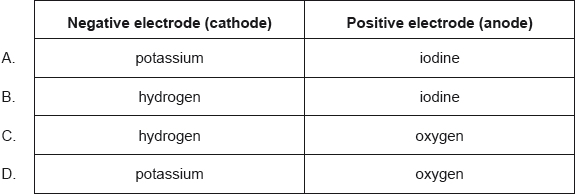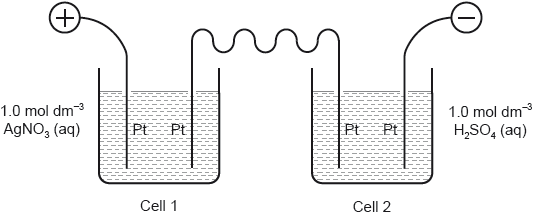| Date | May 2017 | Marks available | 2 | Reference code | 17M.2.hl.TZ2.2 |
| Level | HL | Paper | 2 | Time zone | TZ2 |
| Command term | Calculate | Question number | 2 | Adapted from | N/A |
Question
An acidic sample of a waste solution containing Sn2+(aq) reacted completely with K2Cr2O7 solution to form Sn4+(aq).
Identify one organic functional group that can react with acidified K2Cr2O7(aq).
Corrosion of iron is similar to the processes that occur in a voltaic cell. The initial steps involve the following half-equations:
Fe2+(aq) + 2e– Fe(s)
O2(g) + H2O(l) + 2e– 2OH–(aq)
Calculate E θ, in V, for the spontaneous reaction using section 24 of the data booklet.
Calculate the Gibbs free energy, ΔG θ, in kJ, which is released by the corrosion of 1 mole of iron. Use section 1 of the data booklet.
Explain why iron forms many different coloured complex ions.
Zinc is used to galvanize iron pipes, forming a protective coating. Outline how this process prevents corrosion of the iron pipes.
Markscheme
hydroxyl/OH
OR
aldehyde/CHO
Accept “hydroxy/alcohol” for “hydroxyl”.
Accept amino/amine/NH2.
[1 mark]
«E θ =» +0.85 «V»
Accept 0.85 V.
[1 mark]
ΔG θ «= –nFE θ» = –2 «mol e–» x 96500 «C mol–1» x 0.85 «V»
«ΔG θ =» –164 «kJ»
Accept “«+»164 «kJ»” as question states energy released.
Award [1 max] for “+” or “–” 82 «kJ».
Do not accept answer in J.
[2 marks]
incompletely filled d-orbitals
colour depends upon the energy difference between the split d-orbitals
variable/multiple/different oxidation states
different «nature/identity of» ligands
different number of ligands
[3 marks]
Zn/zinc is a stronger reducing agent than Fe/iron
OR
Zn/zinc is oxidized instead of Fe/iron
OR
Zn/zinc is the sacrificial anode
Accept “Zn is more reactive than Fe”.
Accept “Zn oxide layer limits further corrosion”.
Do not accept “Zn layer limits further corrosion”.
[1 mark]



